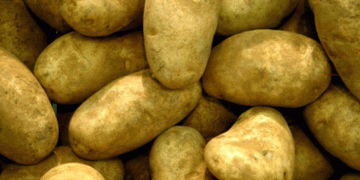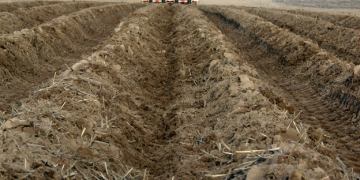Researchers from the St. Petersburg Federal Research Center of the Russian Academy of Sciences (SPb FRC RAS) have developed a method for obtaining humic acids from organic lake sediments (sapropel), which serve as a source for creating drugs that increase crop yields. Acids obtained from sapropel turned out to be better in their main characteristics than existing analogues, which are isolated from wood, coal or peat. The results of the work were published in the scientific journal Agriculture Digitalization and Organic Production.
Sapropel (Greek “clay silt”) is bottom sediments that are formed from the remains of various living organisms (plants and plankton). These substances have a number of properties that have a positive effect on crop productivity. The benefit of sapropel lies in the fact that it contains a number of important organic compounds of various chemical nature to improve the metabolism of plants and the nutrition of microorganisms in the soil, including humic acids and fulvic acids. These two fractions contain vitamins, microelements and other biologically active substances of the hormone-like type.
However, untreated bottom sediments can create a special film that prevents oxygen from penetrating into the ground, which leads to plant degradation, and the area begins to become waterlogged. Therefore, for the effective use of sapropels, it is necessary to thoroughly clean them from various kinds of impurities.
“We have developed a technique that allowed us to purify sapropels and isolate two fractions of organic compounds – humic and fulvic acids. Today, these substances are widely used as the basis for bioadditives that increase the yield of plant symbiocultures, ”says Yan Pukhalsky, junior researcher at the St. Petersburg Federal Research Center of the Russian Academy of Sciences.
Samples for the study were collected during expeditions that have been carried out for the past two years on lakes in the Pskov region under the guidance of Aleksey Mityukov, a leading researcher at the Laboratory of Complex Problems of Limnology at the St. Petersburg Federal Research Center of the Russian Academy of Sciences.
To isolate useful substances from sapropel samples collected on expeditions, researchers have developed a special technology. First, the samples were purified from impurities using an ultrasonic unit, previously created by scientists from the St. Petersburg Federal Research Center of the Russian Academy of Sciences. Then, excess components were separated using a series of acid-base extraction (scientists used a mixture of pyrophosphate, sulfuric and nitric acid in a certain ratio). As a result, fractions of humic and fulvic acids were obtained, for which the researchers conducted a complete elemental and biochemical analysis.
The results of this work showed that the carbon content – this indicator is one of the main parameters of usefulness in the creation of additives to increase productivity – in humic acids obtained from sapropel is about 28%. Whereas similar technologies, with the help of which humic acids are actively synthesized today from wood, coal and peat, demonstrate a carbon concentration at a level of 18 to 20%.
“Thus, we offer a technology for obtaining more efficient raw materials for crop production in closed and open ground. The fund of sapropelic deposits in the water bodies of the North-West of Russia alone is very large, but by now it has either been abandoned or is still poorly developed. Its extraction is not only of commercial interest, but in many cases serves as a nature protection (environmental) measure that allows you to clean and deepen the lake bath, ”says Svyatoslav Loskutov, researcher at the laboratory of hydrochemistry of the St. Petersburg Federal Research Center of the Russian Academy of Sciences.
The research results were presented at the VII International Conference on Humic Innovative Technologies “Humic Substances and Survival Technologies” (HIT-2022).





